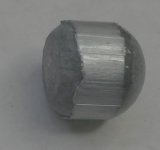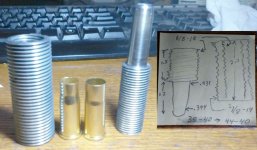A couple weeks ago an email buddy told me about a friend of a friend had two old Winchester rifles he wanted to sell. There was a pic of an 1873 and an 1885.
The story was they were his great great grandfather's and the gun store only offered $1500, but if I matched that I could have them.. and they are pre 1899.
I don't need more guns, but we can't buy guns in WA state without paperwork, unless they are antiques, so I went for it.
They showed up a week ago. The 1873 turns out to be a 44-40 made in 1886 that slugs at .433".
My 44 mag .429" bullets are not going to work.
The next problems is I cannot find 44-40 brass easily. So I started trying to convert 38-40 brass [available] to 44-40.
In the last hour, I made a mandrel and a die body, and I have the brass converting.
The story was they were his great great grandfather's and the gun store only offered $1500, but if I matched that I could have them.. and they are pre 1899.
I don't need more guns, but we can't buy guns in WA state without paperwork, unless they are antiques, so I went for it.
They showed up a week ago. The 1873 turns out to be a 44-40 made in 1886 that slugs at .433".
My 44 mag .429" bullets are not going to work.
The next problems is I cannot find 44-40 brass easily. So I started trying to convert 38-40 brass [available] to 44-40.
In the last hour, I made a mandrel and a die body, and I have the brass converting.



